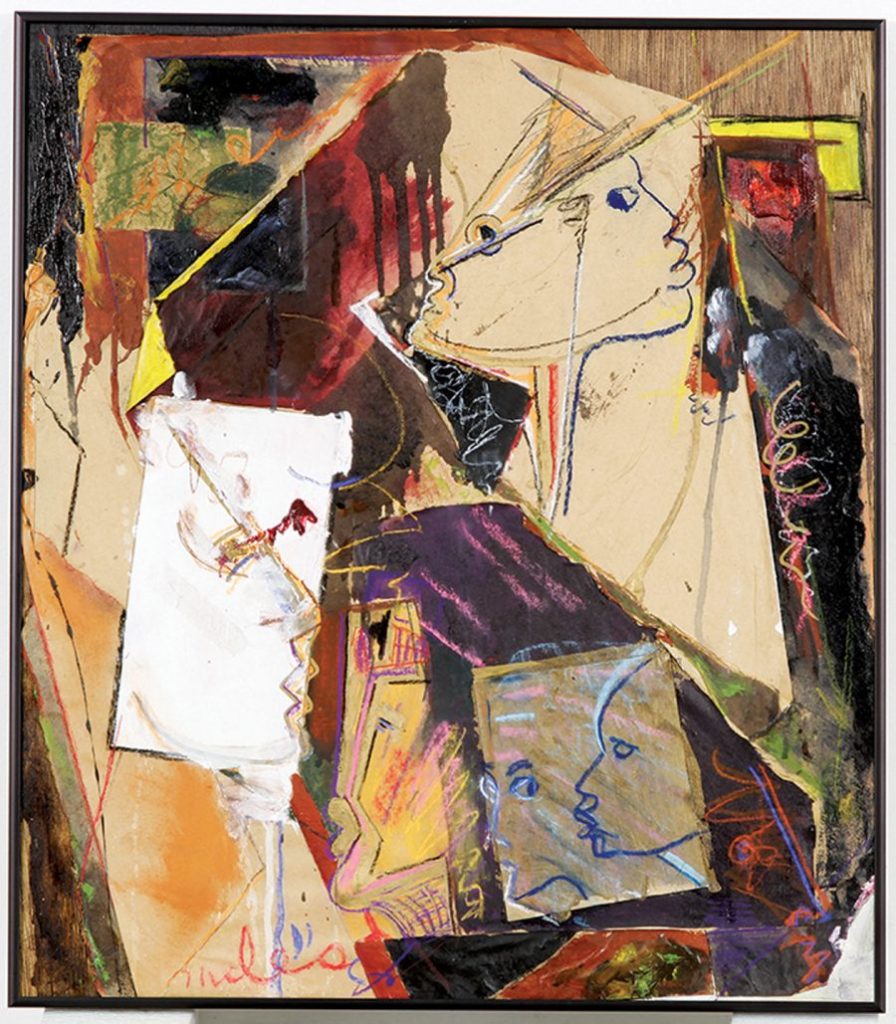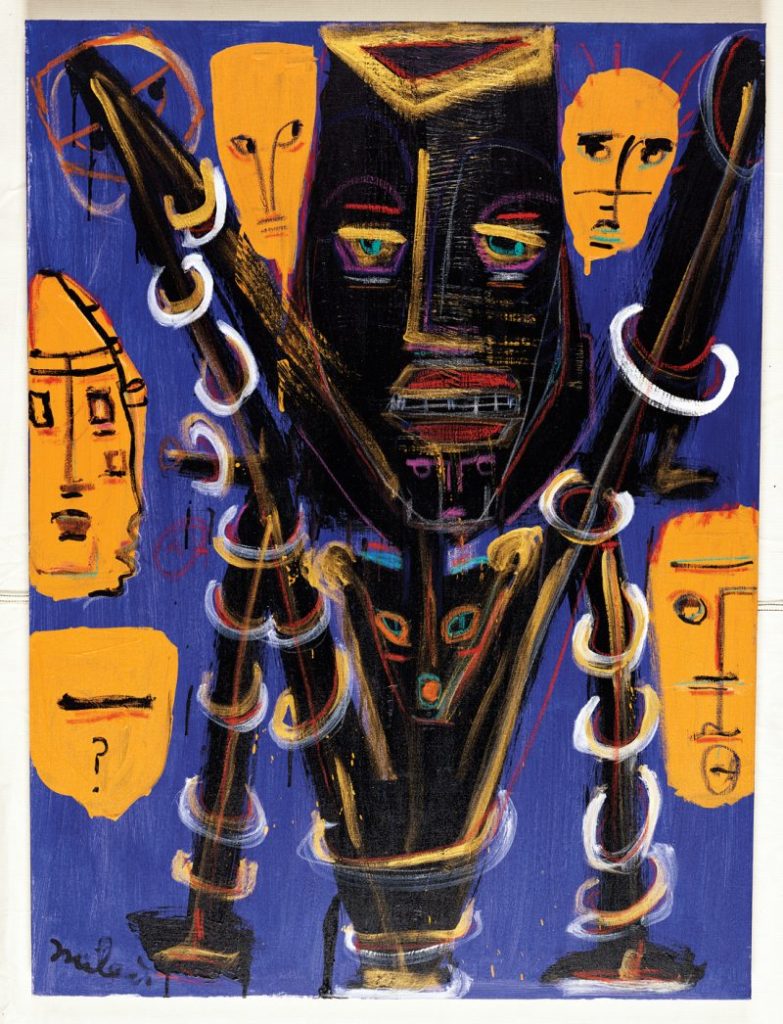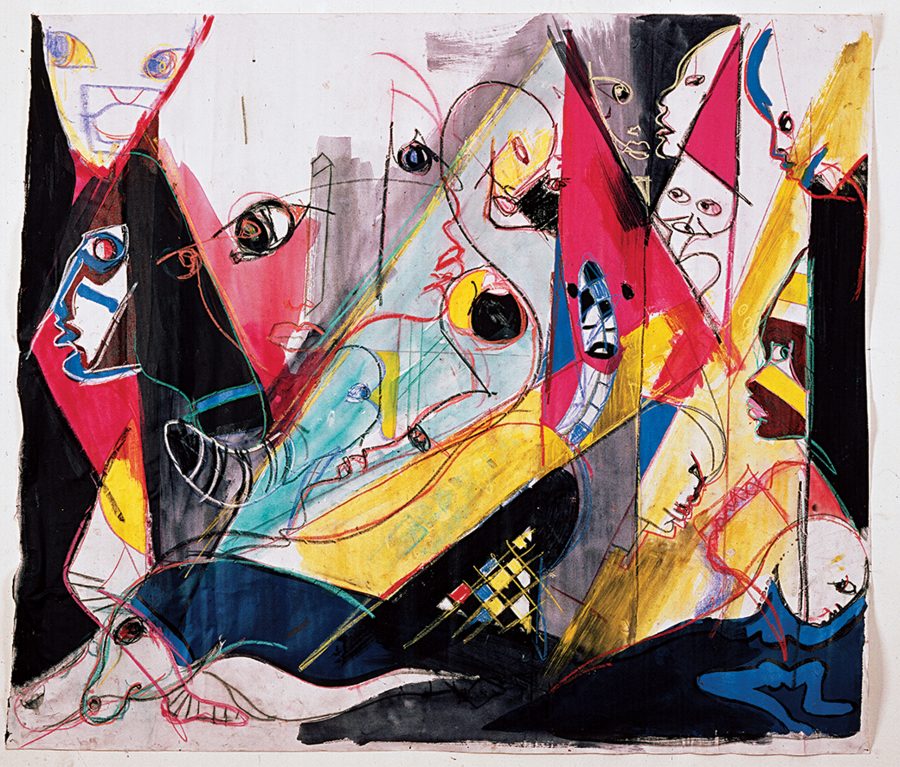Few artists have lived as many creative lives as Miles Davis in his 65s, and they continue to evolve even after his death with the posthumous release of a lost Rubberband album. The album cover, featuring an original painting by Davis himself, may have turned fans into another facet of the songwriter / bandleader / trumpeter’s artistic evolution: his career as a visual artist, which began in earnest only a decade before. his death, in 1991.
“During the early 1980s,” writes Tara McGinley in Dangerous Minds, Davis “made art making as much a part of his life as music…. It was said that he worked obsessively every day in art when he was not on tour and that he studied regularly with the New York painter Jo Gelbard. ” Davis, who never did anything by halves, turned out canvas after canvas, although he did not exhibit much in his life.

He painted mainly for himself. “It’s like therapy for me,” he said, “and it keeps my mind busy with something positive when I’m not playing music.” Being the intimidating Miles Davis, however, it wasn’t exactly easy for him to find artistic partners to communicate with. When he first approached Gelbard, the artist said: “I was scared to death! He could barely speak.”
The two lived in the same building in New York and Gelbard eventually relaxed enough to give Davis lessons, then became his girlfriend, collaborating with him on works like the cover of the 1989 album Amandla. How she characterizes his style :
“The way Miles painted was not the way he touched or the way he drew. He was so minimal and light in the sound of him, in his walking. His body was very light; he was a thin man, a delicate type. His sketches are light, airy and minimal, but when he took the brush and paint from him he was like a child with paints in kindergarten. He would pour it in and mix it until he got too foggy and painted too much. He loved the texture and the feel. His clothes, hands and hair got stained and it was fun for him… ”
Miles also found a partner in the painter Joni Mitchell. She describes how he called her one day and said, “Joni, I like that painting you made. Nice colors. I want to come and see you paint. ” Davis, her musical hero, would not record with her (although he later learned that he owned all of her records). “He was talking about painting but not about music with me.”
A hardcover edition of his collection of paintings appeared in 2013, with a foreword by Jones, perhaps the most avid of Miles Davis collectors. There are many other voices in the book, including author Steve Gutterman, who interviewed Davis before his death and writes an introduction, and various family members contributing personal stories. Miles sums up his own “refreshing and unassuming attitude” toward his artwork in a short statement: “It’s not that serious.”









More Stories
CD review: George Benson – Dreams Do Come True: When George Benson Meets Robert Farnon – 2024: Video, CD cover
The band was tight as ever. The Warren Haynes Band cuts loose: Video, Photos
Interview with Alvin Queen: Feeling Good – I heard these tunes played by … Video, new CD cover, Photos